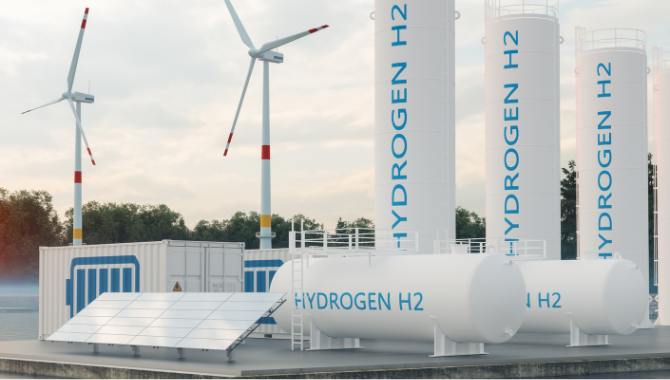3 phase buck boost transformer
You’ve got equipment that needs 460V, but the supply is 480V. Or maybe you’ve only got 208V, and your machine needs 240V to work right. That mismatch? It’s exactly what a 3 phase buck boost transformer is built for. No need to redesign the system—just clean up the voltage where it matters.
We build low-voltage, three-phase buck boost units for commercial and light industrial use. Typical loads include HVAC motors, lighting banks, CNC machines, or even server rooms. They’re compact, air-cooled, and easy to mount. Available in ratings from 3 to 75 kVA—sized to fix the problem, not overcomplicate it.
Not sure if you need to step up or step down? Send us your line voltage and equipment nameplate—we’ll confirm what direction you need and quote the right unit.
Let us fix the mismatch, not your whole setup.
Photovoltaics
One of our solar EPC clients in Nevada was building a string inverter-based ground-mount system. Everything was going well—until the day they tested the HVAC and battery cooling units. The local grid was pushing out 508V on a nominal 480V line, and the compressors were rejecting the feed.
They called and said: “We don’t have time to fight the utility—can you just flatten the voltage down without adding converters?”
We built a set of 3 phase buck boost transformers, tuned to reduce the input voltage by 24V per leg. The units were mounted next to the HVAC panel, air-cooled, and up and running within hours. No permits, no redesign, no delays.
Their project manager messaged us: “You saved us two weeks and a change order. That’s all we needed.”
Energy Storage
A BESS integrator in Texas was finishing up a battery array for a municipal building. Their PCS was delivering clean 480V three-phase—but the switchgear and fire control panel required exactly 440V. Nothing was technically “wrong,” but the customer didn’t want to risk overvoltage flags on certified gear.
He said: “We need to bring the voltage down, but I don’t want to start messing with the PCS settings or voiding warranties.”
We shipped a 3 phase buck boost transformer, configured for a 40V drop, mounted just ahead of the gear. It did the job quietly—no alarms, no interference, no thermal issues.
His lead technician later told us: “Honestly, we forgot it was even there—and that’s a good thing.”
Data Center
A client operating a rural edge data node in Canada reached out. Their generator setup gave them a stable 208V output, but their new cooling system and ATS panel were rated for 240V. Without that extra bump, the gear wouldn’t pass commissioning.
They asked: “Is there a clean way to just raise voltage a notch—nothing fancy, just reliable?”
We provided a 3 phase buck boost transformer, set to raise voltage by 32V. The form factor was compact enough to fit inside their prefabricated power pod, and install took less than half a day.
The contractor on-site said: “No rework, no surprises. That transformer saved the schedule.”
Wind-to-Hydrogen
A hydrogen test site in the Nordics had a micro wind turbine feeding auxiliary loads: pumps, chillers, and sensor racks. Nominal voltage was 415V, but during high wind periods the system surged to 438V—and the control units started throwing fault codes.
They told us: “We can’t throttle the wind, but we’ve got to calm the voltage.”
We shipped them a 3 phase buck boost transformer that shaved 20V off each leg. It was installed between the wind inverter and control gear, with surge protection and sealed housing for outdoor use. Problem solved—no firmware changes required.
The client said: “We didn’t even need to touch our inverter settings. This fixed it cleanly.”
Healthcare
A private surgical center in South Africa contacted us during an expansion project. They were tying into an existing utility line rated 240V three-phase, but their new imaging equipment needed 208V—and the supplier wouldn’t warranty it without correct input.
Their facility lead asked: “Is there a way to drop voltage just enough without touching the rest of our building supply?”
We sent a 3 phase buck boost transformer, sized for just that zone. The unit brought the voltage down to spec, passed safety inspection on first try, and kept the rest of the site untouched.
Their PM told us: “One transformer, one fix. We didn’t have to rethink a thing.”
- Data Sheet
- Three Phase Transformer Catalog
- Shinenergy Product Catalog
| Certification | UL |
| Phase | Three Phase |
| Rated capacity | UP TO 3000KVA Customized |
| Frequency | 50/60Hz |
| Work Efficiency | UP TO 99.05% |
| Protection Class | IP00/IP20/IP23/IP40/IP44/IP54 |
| Winding Material | Copper or Aluminum |
| Insulation level | Class F (155°C) Class H (180°C) Class N (200°C) Class R (220°C) |
| Designed lifetime | ≥30 years |
| Cooling Method | Air Cooling |
| Wiring Configuration | Δ-Y (Delta-Star)/Y-Y (Star-Star)/Δ-Δ (Delta-Delta)/Y-Δ (Star-Delta) /Δ-Z (Delta-Zigzag)/ Y-Z (Star-Zigzag) |
| Noise | ≤35 dB (1 meter) |
| Three Phase Transformer Catalog | |
| 500 kva 3 phase to single phase transformer | 225 kva single phase step up transformer |
| 500 kva single phase to 3 phase transformer | 200kva transformer single phase to 3 phase |
| 500 kva single phase to three phase transformer | 1000 kva 3 phase buck boost transformer |
| 1000 kva 1 phase to 3 phase transformer | 1000 kva three phase to single phase transformer |
| 750 kva transformer 3 phase boost transformer | 200kva 3 phase 208 to 480 transformer |
| 200kva 1 phase buck boost step up transformer | 167 kva 3 phase step up transformer 240 to 480 |
| 150 kva 480 3 phase to 120 single phase transformer | 100 kva 480v to 220v 3 phase transformer |
| 100 kva step up transformer 220 to 440 3 phase | 167 kva 3 phase step down transformer 240 to 208 |
| 167 kva 3 phase step up transformer 208 to 480 | 150 kva 3 phase transformers for sale |
| 100 kva step up transformer 220 to 440 3 phase | 100 kva step down transformer 480 to 240 3 phase |
Need 3-Phase Power? We’ll Build It from What You Have.
Your Voltage Isn’t Wrong—It’s Just Not Right Yet.
When you’ve got a 208V feed but need 240V three-phase for your panel—don’t redesign the whole system. Our 3 phase buck boost transformers are made to fine-tune voltage mismatches. Whether it’s 208 to 230, 208 to 240, or 240 to 480, we build low-voltage correction units that drop right into your layout.
Need help deciding? Our 3 phase buck boost transformer sizing chart walks you through it. You tell us your line voltage, load specs, and distance—we’ll handle the rest. Want to install yourself? We include a clear 3 phase buck boost transformer wiring diagram with every unit, including split-core and reverse-feed options.
Clients use these for CNC machines, lighting, chillers, compressors—even soft-start motors. Whether you call it a buck and boost transformer 3 phase, a 3 phase buck-boost transformer, or a buck/boost transformer 208 to 230, the job’s the same: get clean, corrected voltage where it counts.
No converters, no guesswork. Just transformers that make your system finally click.
It adjusts voltage slightly—say from 208 to 240 or 208 to 230—to match what your equipment really needs. If you’re seeing minor over- or under-voltage issues, this is your go-to fix.
You could—but that’s a large jump. Buck boost transformers are best for voltage tweaks (10–30V). For full-range stepping like 240 to 480, you’d typically want a dedicated isolation or step-up transformer.
Absolutely. Our 3 phase buck boost transformer sizing chart shows you the kVA rating you need based on load amperage and voltage shift. If you’re not sure, just send us your numbers—we’ll size it for you.
That depends on the connection. We send a custom 3 phase buck boost transformer wiring diagram with each unit—based on your voltage direction (buck or boost), source config, and panel type. You can also request a 208 to 240 3 phase wiring diagram or 230 setup.
Many contractors do. If you’ve ever asked “how to wire a 3 phase buck boost transformer,” we’ve got the answer. We label everything and include clear steps. Still unsure? Call us—we’ll walk you through it live.






















